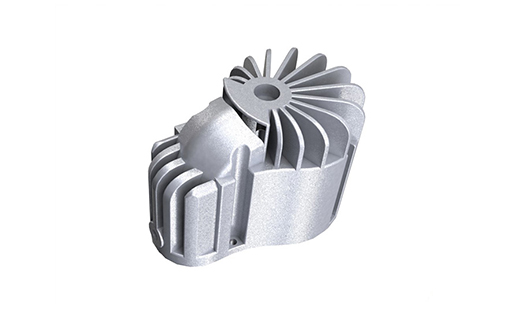 5. Die-casting
5. Die-casting
Die-casting is a metal die-casting performed on a die-casting machine, which is the current production efficiency casting process.
Die casting machines are divided into hot chamber die casting machines and cold chamber die casting machines. The hot chamber die casting machine has a high degree of automation, less material loss, and higher production efficiency than the cold chamber die casting machine. However, due to the heat resistance of the machine parts, it can only be used for the production of castings with low melting point materials such as zinc alloy and magnesium alloy. Die-casting aluminum parts China, which is widely used today, can only be produced on cold-chamber die-casting machines due to its high point. The main feature of die casting is that the molten metal fills the cavity under high pressure and high speed, and is formed and solidified under high pressure. The disadvantage of die casting is that because the molten metal fills the cavity under high pressure and high speed, it is inevitable The air in the mold cavity is wrapped inside the casting to form subcutaneous pores, so aluminum alloy die castings should not be heat-treated, and zinc alloy die castings should not be sprayed on the surface (but can be painted). Otherwise, when the pores inside the casting are heated by the above treatment, they will expand due to heat and cause the casing to deform or blister. In addition, the mechanical cutting machining allowance of die castings should also be smaller, generally, around 0.5mm, which can not only reduce the weight of the castings, reduce the amount of cutting processing to reduce costs, but also avoid penetrating the surface dense layer and exposing the subcutaneous pores, resulting in The workpiece is scrapped.
6. Investment casting
Lost wax casting is now called investment precision casting. It is a casting process with little or no cutting. It is an excellent process technology in the casting industry and its application is very wide. It is not only suitable for casting of various types and alloys, but also produces castings with higher dimensional accuracy and surface quality than other casting methods. Even complex castings that are difficult to cast by other casting methods and difficult to process can be used. Made by investment casting.
7. Lost Foam Casting
Lost foam casting technology (EPC or LFC) is to use foam plastic to make a solid mold with the same structure and size as the part. After dip-coating with refractory bonding paint, dry sand molding after drying, vibration compaction, and then pouring The molten metal causes the pattern to be vaporized by heating and disappears, and a casting method of metal parts conforming to the shape of the pattern is obtained. Lost foam casting is a new technology with almost no margin and forming. It does not require box-closing to take molds. The use of binder-free dry sand molding reduces pollution and is considered to be a process technology that can achieve green casting in the 21st century.
8. Fine grain casting
The principle of fine crystal casting technology or process (FGCP) is to strengthen the nucleation mechanism of the alloy by controlling the ordinary investment casting process, so that the alloy forms a large number of crystalline cores during the casting process, and prevents the growth of grains, thereby obtaining average grains Uniform, fine and isotropic equiaxed crystal castings with a size of less than 1.6mm, the typical fine-grained casting grain size is ASTM 0~2. Fine-grain casting reduces the size and shape of the primary carbide and strengthening phase γ'in the superalloy while refining the grains of the casting. Therefore, the outstanding advantage of fine-grain casting is to greatly improve the low-cycle fatigue life of castings at medium and low temperatures (≤760°C), and significantly reduce the dispersion of mechanical properties of castings, thereby improving the design tolerance of casting parts. At the same time, the technology is also to the extent the tensile properties and performance of the casting and makes the casting have good heat treatment performance.
We are Die-casting aluminum parts factory, if you have any demand for our products, please feel free to contact us.